Carbon Steel vs. Cast Iron: What’s the Difference?
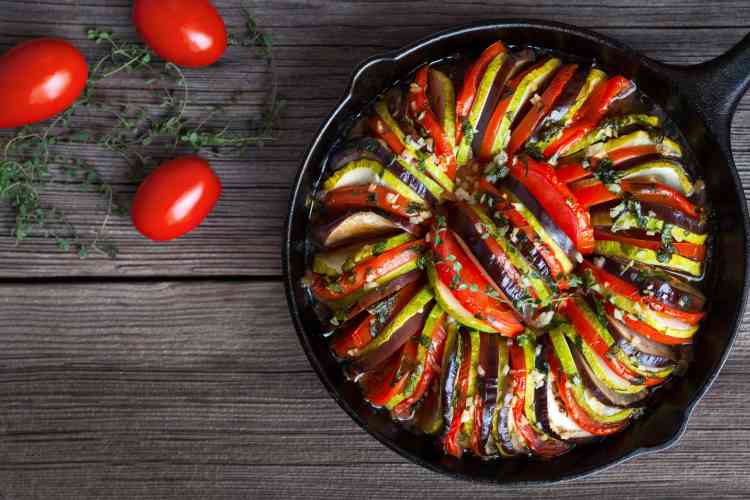
One of the most common questions for aspiring home chefs revolves around the carbon steel vs. cast iron debate. For many, it can be difficult to differentiate between these two types of pans. In fact, they share more similarities than they have differences. But despite their many similarities, cast iron and carbon steel do have their own unique characteristics that make each of them a great addition to your cookware collection. This guide will give you a helpful breakdown of carbon steel vs. cast iron, as well as provide maintenance tips for both types of cookware.
Jump to Section
- What Is Cast Iron?
- What Is Carbon Steel?
- Cooking With Carbon Steel vs. Cast Iron
- Caring for Carbon Steel vs. Cast Iron
What Is Cast Iron?
Cast iron is certainly the cookware material most people are immediately familiar with. Cast iron has been used to make pans and skillets for generations. Typically, cast iron is made of around 97% iron mixed with up to 3% carbon. This means that while it is a great conductor of heat, it is quite brittle. The best cast iron pans, when cared for correctly, only get better with age, and proper maintenance makes them practically non-stick. Cast iron pans also have a distinct matte black finish that makes them unique.
Some things to note when it comes to carbon steel vs. cast iron pans are weight and shape. Cast iron skillets can be slightly heavier than their carbon steel counterparts, though many chefs note that the difference is minimal. When it comes to shape, cast iron pans and skillets like the Finex Cast Iron Skillet & Lid Set or KitchenAid Enameled Cast Iron 12-Inch Skillet often have a traditional shape with straight sides.
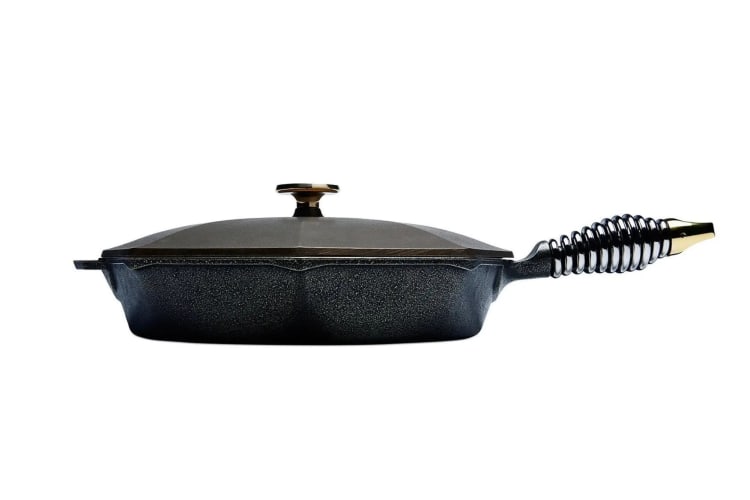
What Is Carbon Steel?
In the carbon steel vs. cast iron debate, cast iron can sometimes be the dark horse. Typically, carbon steel pans are made with the same mixture of materials as cast iron, just in different quantities. Carbon steel pans have 1% or less of carbon and are much more malleable than cast iron. Like cast iron, carbon steel is a great heat conductor. Unlike cast iron, carbon steel tends to heat up more evenly, though it does lose heat quicker than its cast iron counterparts. Carbon steel pans, unlike cast iron, have a shiny finish that will continue to develop over time as you season the metal cookware.
In terms of shape, carbon steel skillets vs. cast iron skillets are quite different. Carbon steel pans have sloped sides, which means they are great for stir-frying vegetables or handling any other cooking that might require flipping the food in the pan. Helen's Asian Kitchen Carbon Steel Round Bottom Wok Set is a great example of this unique shape if you’re looking to add a new piece to your list of best stainless steel cookware.
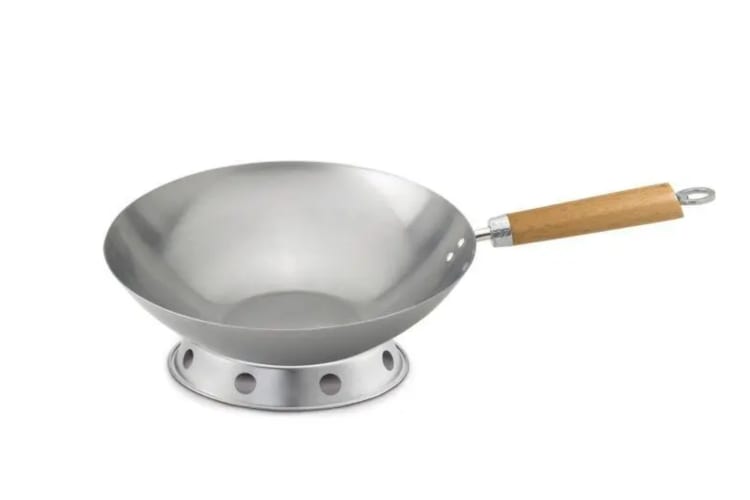
Cooking With Carbon Steel vs. Cast Iron
When it comes to cooking with carbon steel vs. cast iron pans, there are several factors to consider. First, both carbon steel and cast iron can handle high heat and are suitable to use on the stovetop, in the oven or on the grill. Both of these types of cookware are excellent for searing meat, and cast iron pans can even be used in unexpected ways like baking. Use either one for pan-searing a steak or any other cooking task that requires high heat.
It is good to note, however, that cast iron pans may take longer to heat up than carbon steel cookware, which heats up faster but also cools off more quickly. Cast iron retains heat for much longer. Another good reminder for cooking is that cast iron pans might not heat as evenly as carbon steel; you are likely to find a cast iron pan hotter directly over the heat source with cooler spots farther away.
Another consideration is the shape of a carbon steel vs. cast iron pan. As mentioned before, cast iron pans typically have straight sides, which means you’ll often find skillets, muffin pans, Dutch ovens or griddles made of cast iron. They are not ideal for stir-frying vegetables, as the high heat and straight sides make it difficult to toss the vegetables.
Carbon steel pans, with their sloped sides, are often shaped as skillets and woks. Because of their sloped sides, carbon steel vs. cast iron woks are a better choice for this cooking method, as are carbon steel skillets vs. cast iron skillets.
Note that neither cookware is ideal for wetter cooking methods like braising or stewing because these techniques can actually damage the surface of the cookware.
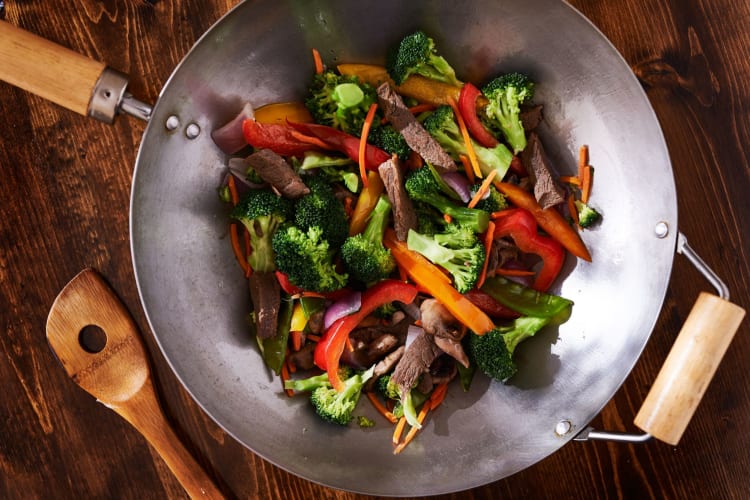
Caring for Carbon Steel vs. Cast Iron
One of the key questions home chefs have is how to clean a cast iron skillet, and many may wonder the same thing about their carbon steel cookware. The good news is that both of these cookware types require similar maintenance. The basic steps are to gently wash the pan and then season it with oil to help create a non-stick surface over time.
Whether you are using a pre-manufactured kit like the Finex Cast Iron Care Kit or just relying on the materials you have at home, you don’t have to be intimidated by the thought of maintaining your carbon steel vs. cast iron pans. For best results, clean your pan while it is still warm, rinsing it in water only. It’s best to avoid using soap on both cast iron and carbon steel, though some experts agree that it’s okay to use a little soap every now and then. One example of this would be the first time you use a newly purchased cast iron or carbon steel pan. Washing with a small amount of gentle soap can remove any leftover dirt or residue from the manufacturing process.
After soaking or rinsing your pan in water only, use a soft cloth or sponge to wipe it clean. Another cleaning faux pas to avoid with both carbon steel and cast iron is scouring too much. This can also damage the surface of the pan. After washing, be sure your pan is completely dry before moving on to the next step: seasoning. To season your pan, coat it with a thin oil like vegetable oil or canola oil. Many chefs find it's easier to do this for the first time if your pan is already warmed.
It is important to note that many carbon steel pans come completely unseasoned, which means it’s vital for you to take that step yourself before using the pan. The same can’t always be said of cast iron pans, which often come pre-seasoned. It’s always a good idea to read the labels on your cookware carefully and follow their specific care instructions in order to keep your pans in great condition.
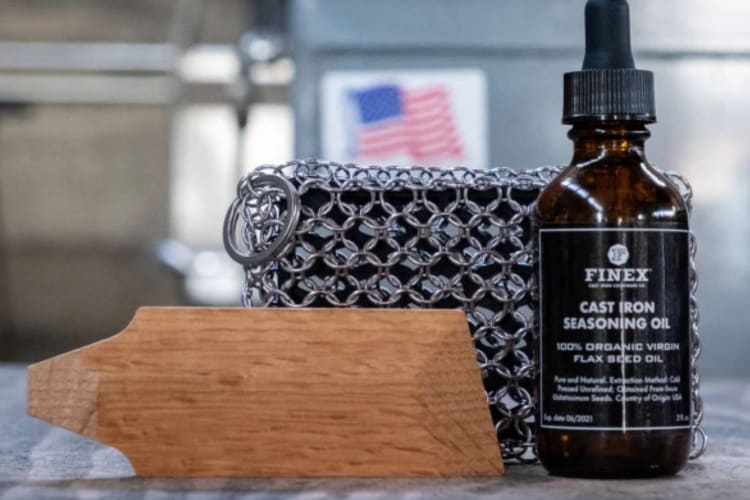
For many home chefs, the differences between cast iron vs. carbon steel are almost indistinguishable, but we hope this guide has shown you the subtle differences between these two popular types of cookware. Cast iron cookware, known for its traditional shape and high heat retention, is perfect for searing meat and baking. Carbon steel pans and skillets, with their signature sloped sides and even heat distribution, are excellent for searing meat, stir-frying vegetables and more.
Both cast iron and carbon steel are excellent conductors of heat, and both, when properly cared for, can last for generations. Ultimately, both of these pans are excellent staples for any home chef looking to build their cookware collection.
For even more ways to elevate your kitchen, check out chef-recommended cookware in the Cozymeal Shop.
